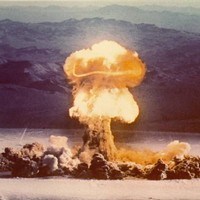With the Obama administration moving toward its sixth year, the traditional nuclear arms control process—which has for the past several decades been driven in large part by a series of bilateral and multilateral treaties—appears to be lagging as nuclear threats and fears shift and as the U.S. political scene remains gridlocked. To move its broader nuclear agenda forward, the administration is pursuing mechanisms and institutions that allow the United States to build security and technical cooperation with partner nations without a time-consuming and politically bruising treaty ratification process.
Some of these mechanisms are new, like the series of nuclear security summits, while others build on the groundwork laid by previous administrations, such as a Proliferation Security Initiative (PSI). And as the Washington Post reported earlier this week, international efforts to implement the Comprehensive Test Ban Treaty (CTBT) ahead of its entry into force have produced significant scientific gains for the United States and other countries.
The administration’s “Prague Agenda” is based in large part on U.S. and international ratification of several treaties, including a treaty to cease the production of fissile material for nuclear weapons and possibly further treaties to reduce global nuclear weapons stockpiles. The United States last ratified a nuclear arms control treaty in 2010, when the Senate approved the New START treaty with Russia in a last-minute vote.

